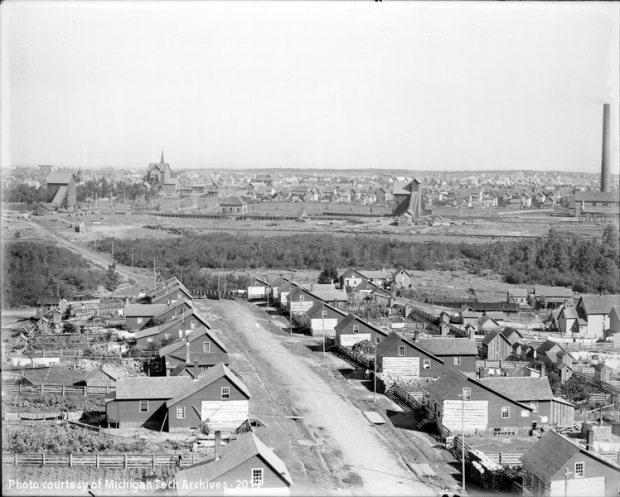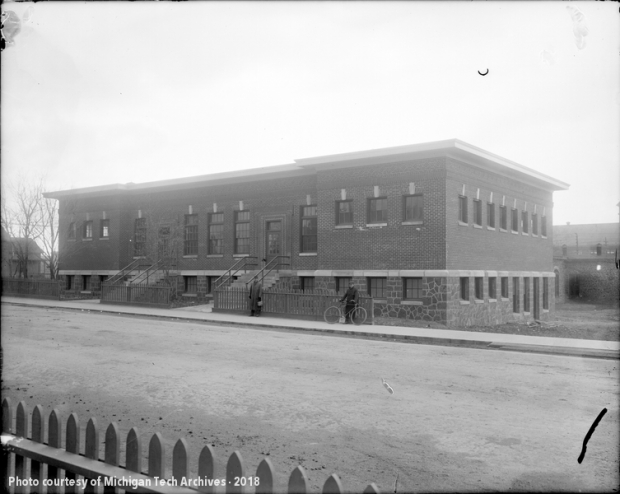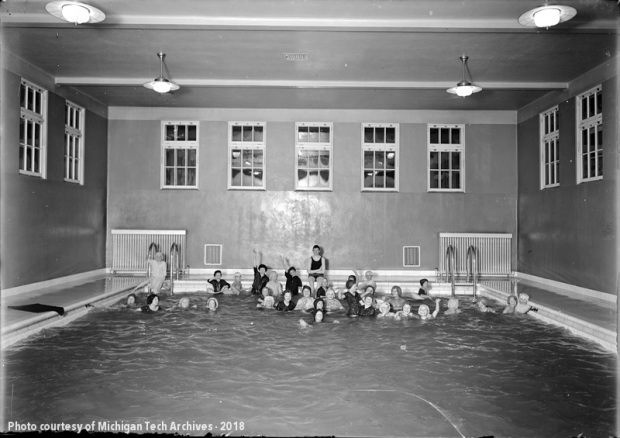There’s nothing like a long soak in the tub at the end of a long day. Run the water hot, turn the lights down, and settle in among the bubbles with a good book to wash away stress and frustration. While this pleasure might seem a simple one today, for many Copper Country residents a hundred years ago, the luxury of a long bath at home was precisely that: a luxury. Mine managers, prosperous business owners, bankers, or other members of the upper crust might have a bathroom with hot running water for themselves and even their household servants. The family of the average trammer or surface laborer, on the other hand, hauled a washtub into the kitchen on Saturday nights, boiling water on the stove, and pouring it into the larger vessel for a scrub.

The typical Calumet & Hecla company house in the early 1900s did not include a bath on initial construction. Upon written request, the company would be willing to install a flush toilet in the basement if the house were located on a street connected to the local sanitary sewer; if the homeowner had built his own house on land leased from the company, he had to purchase the fixture himself and pay for installation. By 1912, historian Alison K. Hoagland noted in her book Mine Towns, half of C&H company houses already featured this indoor convenience, and the company was responding to requests for more. The question of a full bath–and an installed bathtub–was another matter entirely. Large families and boarders who provided needed supplemental income strained the size of working-class company houses; residents needed all the square footage provided by bedrooms, kitchens, pantries, and common areas. Giving up sleeping spots for bathing room was simply impractical, and constructing an addition to make a space was beyond the financial means of a common laborer.

Yet while C&H was unwilling to provide the fixtures or the room necessary for its average employee to bathe conveniently at home, it did offer a compromise that represented, perhaps, one of its most enjoyable benefits. The company instead installed communal baths in a central location. At first, this was the basement of the C&H library building, a fine stone structure erected at the corner of Mine Street and Red Jacket Road. Bath patrons descended the western staircase of the building to a landing that separated them into male and female quarters. On the men’s side, showers proved more popular than baths. In the women’s facilities, tubs won out. While friends and family members browsed the vast selection of company-approved books a floor or two above, downstairs their bodies could be scrubbed clean of dirt, germs, and worry.

The baths proved so popular–unsurprisingly–that C&H soon found a need to expand the facility, a move that also opened up more room at the library. Employees and family members looking to bathe didn’t have to go far to find the new place, however. In 1911, the redesigned and expanded bathhouse opened in a single-story structure just around the corner on Depot Street. Possibly to offset the $45,000 price tag and to subsidize operations, C&H imposed a small fee for male users: three cents for grown men with a half-cent discount for adolescents. Women, girls, and very young boys still enjoyed the bathhouse for free. Showers and tubs remained, but the improved building offered an extra treat: a swimming pool. Initially, swimming time, like the bath facilities, was strictly segregated by gender. Why? Unlike today, few people purchased special bathing suits. Swimming took place au naturel!

As the workforce shrank and C&H became increasingly disengaged from providing benefits like the bathhouse, homeowners found it more practical and more affordable than before to add bathrooms with bathtubs to the house. The former bathhouse still stands in Calumet, however, and scars of the original shower stalls in the basement of the company library can be seen today by visitors to the Keweenaw National Historical Park archives. One wonders if maybe a stray rubber duck from a miner’s bath long ago might one day be found tucked away in an office corner.
And we take this for granted!!! Wow I enjoyed reading about getting clean..clean is good…..clean makes our mothers proud………….clean makes our wives happy YAW clean is good and so is this story
Interesting read and very practical concept. I am grateful for my indoor conveniences. When we were up north a few years ago, we got to tour that area at the Keweenaw National Historical Park. Beautiful old building. I think I did see a small rubber duck…